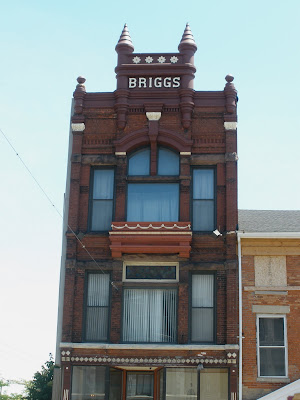What at first looked like bricks turned out to be stones.
These are cobblestone buildings; something I'd never heard of.
It was a popular style of home built from 1825 to 1860.
The school house above was built in 1836 and used until 1954.
The term cobblestone refers to the size of the rock. If it could fit in the palm it was a cobblestone, picked up with two fingers was a pebble, and if it took both hands it was a boulder. What you see is the end of a smooth lake-washed rock shaped like a potato.
.
The smaller rock was the more desirable look and the most expensive to build. As you went south from Lake Huron the cost rose because of shipping fees. Usually the sides were made up of larger rocks and the back of the building larger still.

The smaller rock was the more desirable look and the most expensive to build. As you went south from Lake Huron the cost rose because of shipping fees. Usually the sides were made up of larger rocks and the back of the building larger still.
.
 A private home using multiple techniques.
A private home using multiple techniques. Another private home with cobblestone on the front and field stone on the side.
Another private home with cobblestone on the front and field stone on the side.
A cobblestone church showing the field stone foundation. The walls were 15-18'' thick.
The buildings are dated in the late 1880's .
 Fabulous, huh?
Fabulous, huh?

Many of the businesses are closed, but Albion has something else going for it.
 Fabulous, huh?
Fabulous, huh?
Many of the businesses are closed, but Albion has something else going for it.






No comments:
Post a Comment